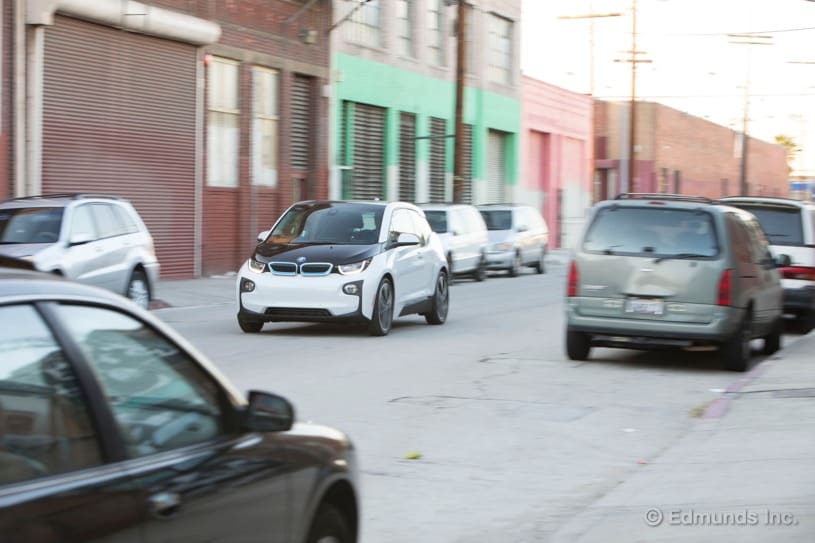Toyota announces new bZ4X all-electric vehicle on Beyond Zero platform
Toyota has developed a new platform for battery electric vehicles, that it’s calling Beyond Zero. Vehicles using this modular BEV platform can be sized as needed to fit various needs. The first of those vehicles will be the bZ4X, a small SUV to launch in mid-2022.
True to form, Toyota is taking a long-view approach to electric vehicles by “introducing sustainable vehicles practically.” The company is developing a full lineup of electrified vehicles that includes hybrids, plug-in hybrids, battery electrics, and fuel cell electrics. On the back end, the company has zero or near-zero waste facilities for manufacture, a robust recycling program, and other low-impact methods in its repertoire.
The bZ4X is the first in a planned series of battery electric vehicle options in Toyota’s lineup. All will be based on the bZ platform, with a total of seven models to be introduced by 2025. These electrification plans and a teaser of the bZ4X were announced at Auto Shanghai in April of 2021.

Toyota
For structural rigidity and dynamics, the bZ4X places the batteries in line underneath the floor. This lowers the vehicle’s center of gravity and centralizes the temperature control systems for those batteries. A cross framework of frame-bracing and structural members protects the battery pack from harm in a collision, by distributing collision energy over multiple routes in both frontal and side impacts. In the event of a battery breach or cross-leakage in the battery pack, the coolant circulating through the cells is a high-resistance coolant designed to prevent fires.
The batteries and their systems are designed to retain over 90 percent of battery capacity after 10 years, with Toyota’s ultimate goal being to have BEVs capable of a long service life. Batteries can then be re-purposed or recycled, much like most components of an internal combustion vehicle are today. Systems like redundant battery monitoring for voltage, current, and temperature help detect and prevent bad cells and overheating.
The bZ4X also has a power feeder connector to supply high-output electricity to homes and outdoor appliances, for use during emergencies or outdoor activities. The car can also be used as a power pack for storing solar power generated by the home for use at night.

Toyota
Physically, the bZ4X is sized very similarly to the RAV4. It’s slightly longer at 184.6 inches (4,690 mm), a bit wider at 73.2 in (1,860 mm), and a bit shorter at 64.9 in (1,650 mm) high – its wheelbase is 112.2 in (2,850 mm). The bZ4X seats five and has a cabin area of 76.4 in (1,940 mm) long by 59.6 in (1,515 mm) wide. Cabin height is determined by the presence of a solar rooftop or panoramic glass roof. The solar roof has a height of 45.7 in (1,160 mm) while the panoramic roof has a height of 45 in (1,145 mm). There’s roughly 120.4 cubic feet (3,409.3 liters) of interior room.
Powering the bZ4X is a 71.4-kWh battery pack outputting 355 volts to one or two electric motors. AC charger output is 6.6 kW and DC charging output is 150 kW. The bZ4X and all bZ-platformed vehicles are designed to be front-wheel or all-wheel drive, with one motor on each axle. It has either one 150-kW motor (FWD) or two 80-kW motors (AWD) for a total system output of 150-160 kW (201-214.5 hp). Those motors also act as generators for regenerative braking. Estimated range is 460 to 500 miles (740 to 805 km), depending on AWD or FWD configuration.
This design means an 8.4-second 0-62 mph (100 km/h) sprint time in front-wheel drive models, and 7.7 seconds in all-wheel drive.

Toyota
Toyota has developed a unique steer-by-wire system, available for the bZ4X, which eliminates the mechanical connection between steering wheel and tires. Infiniti did this several years ago with some success, but it proved unreliable. Toyota says that it’s created multiple redundancies to eliminate issues while capitalizing on the capabilities of a by-wire system.
Lock-to-lock (hardest right to hardest left) is set to 150 degrees, which means the driver will not have to change grip during any driving scenario. Steering torque, since it is electronically controlled, is dynamic, giving the driver input about tire steer angles and g forces during maneuvers. And because there is no physical connection between steering and tires, most of the random road noise and vibration felt in a traditional vehicle is lost, allowing the system to automatically adjust for road surface changes instead of burdening the driver with them.
The Toyota bZ4X is expected to enter production mid-year 2022 in most global markets.
Source: Toyota








